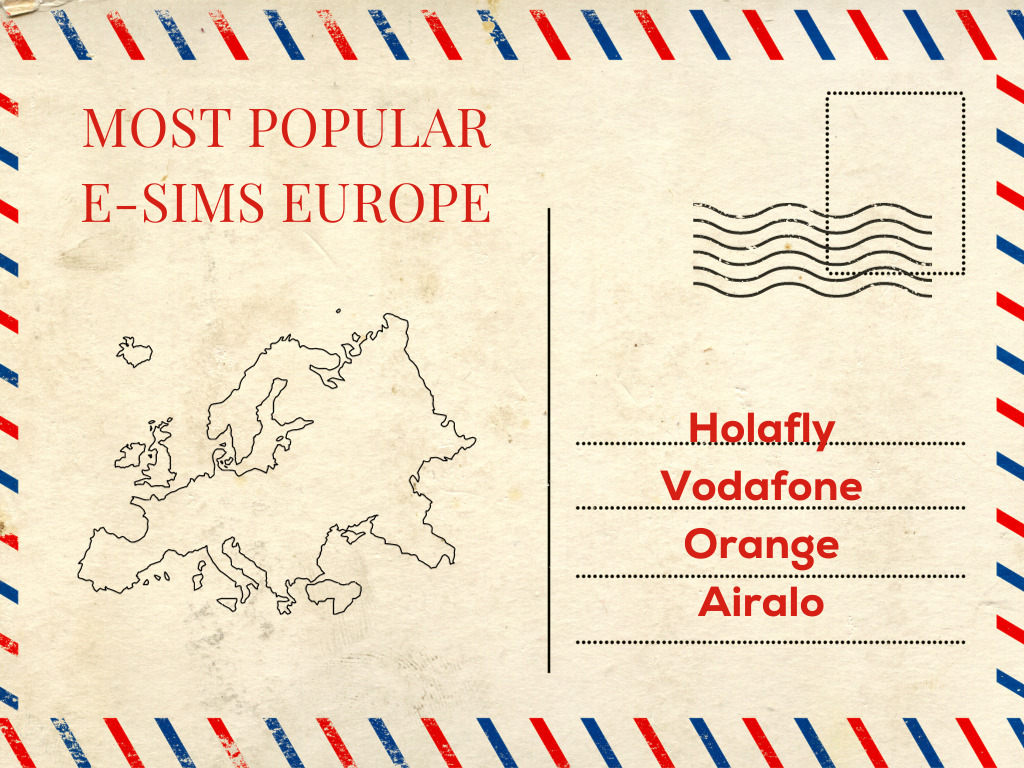How To Choose The Best Europe SIM Card For Your Trip

Planning a trip to Europe can evoke both excitement and a sense of overwhelm. As you dream about visiting iconic destinations. After seeing famous sights, and trying new cuisine, don’t forget one essential detail. This is of course your SIM card.
Choosing the right SIM card is crucial for staying connected. This is even throughout your travels across Europe’s 44 unique countries. This guide will walk you through the key factors to consider and help you select the ideal SIM card for your trip.
Research And Analyze Your Mobile Needs In Europe
With over 85% mobile coverage on average in Europe, it’s easy to stay connected—if you have the right Europe SIM card. It’s important to note that each European country has its own mobile landscape and specific SIM requirements. For instance, some countries issue a European SIM card right at the airport upon arrival, while others require you to visit a provider’s store.
Understanding the nuances across Europe is just the beginning. Now, let’s dive into assessing your own usage needs during the trip.
Determine Your Data, Talk, And Text Requirements
The average European traveler uses around 128 MB of mobile data per day. However, your needs may vary widely depending on your activities. Are you planning to stream sports highlights? Video call family back home? Navigate using Google Maps?
HD video streaming for an hour can consume up to 1.5 GB of data. Calculate your potential usage across maps, social media, web browsing, and other activities. Don’t forget that international calls from Europe cost up to $1.50 per minute, and texts around 50 cents each.
Having estimated your usage needs, let’s now explore SIM card options that can fulfill them in a cost-effective manner.
Compare European SIM Card Providers And Plans
When considering SIM card providers, you have plenty of choices. Major players like Vodafone, Orange, and Holafly each have extensive European coverage. They also offer competitive offerings.
Vodafone’s 4G network reaches 99% of the European population across 10 countries. Orange operates in 29 European countries with deals like 5GB starting packages. Holafly is available in 32 European countries and offers plans with unlimited data.
Besides coverage, compare data allotments, talk, and text bundles. Make sure to check validity periods and rates for extras like international calling.
Choose Between Prepaid And Postpaid SIM Cards
Prepaid Europe SIM cards are a popular choice for short-term travelers, providing cost control and flexibility without contracts. However, postpaid plans may provide more data or usage benefits for long-term stays.
Prepaid SIMs allow you to pay upfront with no credit checks. You can top up as needed during the trip. Postpaid plans involve monthly bills and may require long-term commitments. Consider convenience, costs, and the length of your stay.
Ensure Your Phone Is Unlocked and Compatible
Before purchasing your Europe SIM card, verify that your device is both unlocked. Also make sure that it is technologically compatible with European networks. Contact your home provider to unlock your phone if needed. Dual SIM phones allow using your existing number alongside a Europe SIM.
Now, let’s delve into the practical aspects of acquiring and managing your Europe SIM card.
Purchase And Activate Your SIM Card
You can purchase Europe SIM cards at provider stores, airport shops, electronics retailers, or online. Compare deals across purchasing channels. You’ll need your passport for identification when buying and activating your SIM.
The activation process varies by country. Some providers activate the SIM for you instantly, while others require you to call or go online to activate. Follow the instructions closely.
Manage Your Europe SIM Card Use
Once activated, monitor your data and talk time balances by texting keywords to the provider, using the online account dashboard, or downloading the mobile app.
Top up your Europe SIM card through online banking, vouchers, or store visits. Contact customer support if you face any issues with coverage, data speeds, or billing. Consider purchasing a backup SIM card in another European country for added flexibility.
Plan Ahead and Make the Optimal Choice
When planning your Europe travels, research SIM card options 2-3 months in advance for the best deals. Upon arrival, you can extend short-term SIM cards by topping up if your trip runs longer than expected.
Careful prepaid SIM selection allows for avoiding bill shocks from high roaming charges. Read reviews and fine print to avoid hidden fees. With the right Europe SIM card, you can stay seamlessly connected to share your adventure!
Plan Ahead And Make The Optimal Choice
When preparing for your travels in Europe, it’s advisable to conduct thorough research on SIM card options well in advance, ideally 2-3 months prior to your trip, to secure the most favorable deals. Upon reaching your destination, it’s worth noting that short-term SIM cards can be extended by topping up if your travel plans exceed the initially anticipated duration.
Choosing a prepaid SIM card thoughtfully is crucial to steer clear of unexpected expenses stemming from high roaming charges. To make an informed decision, take the time to read reviews and carefully examine the fine print to avoid any hidden fees that may arise.
Choosing the right European SIM card for your needs ensures a seamless and uninterrupted connection, allowing you to share your travel adventures without the concern of excessive costs or connectivity issues.
Frequently Asked Questions (FAQs)
How much does a European SIM card cost on average?
Prepaid SIM cards in Europe start around $8-15 for a basic plan with calling and limited data. More extensive data and talk time bundles cost $20-40. Postpaid plans have higher monthly fees but include more allowances.
Can I use my regular phone number with a Europe SIM card?
Most European SIM cards issue you a new local number. Options like dual SIM phones allow using your existing number alongside a European SIM card. Some providers may allow porting your number for a fee.
Are there restrictions on using a European SIM card across multiple countries?
Europe SIM cards are designed to work across EU countries. However, verify roaming policies and charges if also using your SIM extensively in non-EU nations like Switzerland or the UK.
With some savvy planning and research, you’re sure to find the perfect Europe SIM card to stay connected on your exciting travels. Safe journeys, and happy roaming!
Read Also:


























Leave A Reply